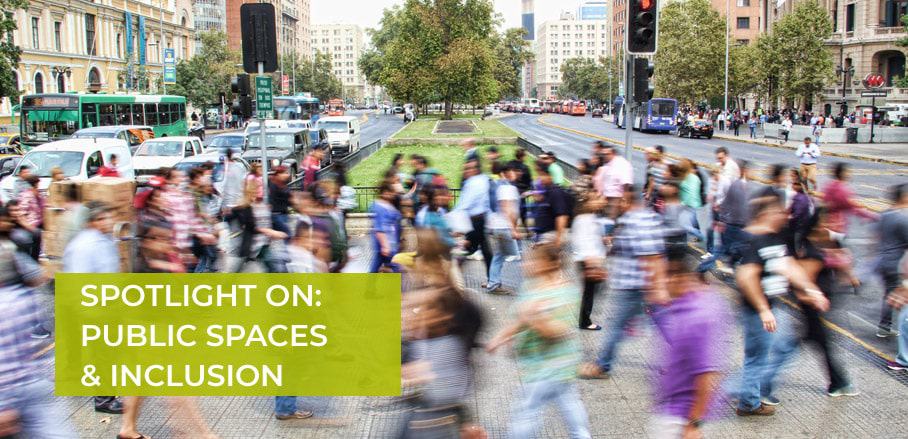Accessible Mobility for All: Development Cooperation For Accessible Public Transportation
Accessible mobility—public transportation that can be used by anyone—is a critical component of future urban development. The New Urban Agenda calls for a significant increase in accessible public transportation, and accessible mobility is part of the UN Convention on the Rights of Persons with Disabilities.
Worldwide, more than one billion people live with a disability, 80 per cent of whom live in developing countries. In addition, as advances in medicine help more people live longer, the number of people over the age of 60 is expected to double by 2050. To participate in work and social activities, older people and people living with disabilities need accessible public transportation. Countries in both the global North and the global South should prioritise accessible transportation—and development agencies can help by encouraging community participation, sharing best practices, and raising awareness of this critical urban development challenge.
What is universal accessible transportation and why do we need it?
For most people in cities, accessible public transportation is necessary to get to work, school, or health facilities like hospitals. If public transportation is not accessible, people with disabilities and the elderly could be excluded from work and social activities, which can lead to poverty and frustration. [inlinetweet prefix=”” tweeter=”urbanet_info” suffix=””]By increasing awareness of the need for accessible transportation among urban planners and city leaders, we could improve living conditions for many people[/inlinetweet]. Development agencies can help by ensuring that universal accessibility is part of all public transport programmes and that plans include procuring and building accessible infrastructure.
But what is exactly considered “accessible public transport”? To be accessible, public transportation systems should be designed using universal design principles, which seek to ensure that products, environments, programmes, and services are usable by all people, to the greatest extent possible, without the need for adaptation or specialised design. Universal design is a design for all—for mobility, hearing or sight impaired persons or people with cognitive difficulties. But also parents using pushchairs, people carrying heavy luggage, cyclists or people who are not native speakers will benefit from a design, which pursues to mitigate barriers.
To understand the diverse needs of transportation users, urban transportation planners should engage people with different needs throughout all phases of the process, from planning to post-implementation. Stakeholder roundtables—including organisations representing people with disabilities, elderly people, cyclists, and other user groups—can bring these groups together so they negotiate their conflicting needs and reach compromises that are fair to all.
As of today, there is no ISO Standard for public transport, so conditions vary widely in different countries. Often architects and urban planners do not know how to incorporate universal design principles into their work. Establishing an ISO standard would support a common understanding of accessibility and ensure that systems are similar across borders. Development agencies can assist this effort by supporting the development of a common ISO standard for accessible urban transport.
Informal transportation systems
Particularly in cities in the global South, informal transportation systems have evolved in parallel to planned public transportation. These informal transport systems are often more flexible and “traditional”—and thus they are very successful and cannot be replaced by the formal systems at this time. But full accessibility can only be assured if informal transportation complies with universal accessibility standards. A good practice example for an entire universal accessibility plan is the Universal Access Policy of Cape Town which was approved by the City Council in 2014 that includes all parts of the city’s transportation system and explains how the policy should be implemented for all new and existing services.
Some cities lack public transportation entirely. In this case, accessibility should be part of the planning process from the beginning, since it could be much more expensive (or impossible) to rebuild or adapt accessible infrastructure at a later date. For example, if train and bus stations and platforms are designed to be adjustable when built, it is assumed that the additional costs are only one percent of the total.
Leave no one behind
[inlinetweet prefix=”” tweeter=”urbanet_info” suffix=””]Accessible transportation is a crucial component of efforts to increase social inclusion, economic development, and environmental sustainability[/inlinetweet]. Increasing accessibility will strengthen the economy by increasing access to places of work, shopping, and trade. More people using public transportation means fewer carbon emissions and less air pollution. And equitable access reinforces social inclusion.
[inlinetweet prefix=”” tweeter=”urbanet_info” suffix=””]Universal accessibility must be a key criteria for public transport development programmes—so that we leave no one behind.[/inlinetweet]
